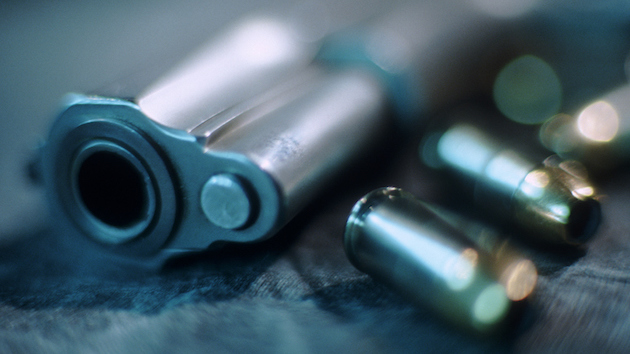(NEW YORK) — A wrong address, a mistaken car, and stray basketball – five times over six days, seemingly mundane interactions turned violent or deadly after one party pulled out a firearm.
Though the facts in each instance vary, experts tell ABC News that the cases broadly reflect the sheer numbers of firearms in the United States and elements of gun culture that have bled into vital legal frameworks governing self-defense.
“There’s absolutely a risk that the combination of loosening gun carry laws, relaxing self-defense laws, and politicizing self-defense through pardons and the like could lead to more incidents like the ones that we’ve seen,” law professor Eric Ruben told ABC News.
The incidents began in Kansas City, MO, when 84-year-old Andrew Lester shot 16-year-old Ralph Yarl after he mistakenly approached Lester’s home and rang his doorbell after looking for the wrong address. Two days later, Kevin Monahan, 65, shot and killed Kaylin Gillis, 20, when she and her friends pulled into his driveway mistakenly in upstate New York.
The same day, Antonio Caccavale, 43, shot at the car of Waldes Thomas Jr., 19, and Diamond Darville, 18, who drove into the wrong driveway while delivering groceries with Instacart in Florida.
On April 18, Robert Louis Singletary, 24, shot at a family, including a 6-year-old girl, after a stray basketball rolled into his yard in North Carolina. In Texas, that same day, Pedro Tello Rodriguez Jr, 25, allegedly shot two high school cheerleaders after they mistakenly entered the wrong car.
Experts warn that the incidents reflect the sheer number of firearms in the U.S., with estimates suggesting there are more than 400 million firearms in circulation throughout the nation.
“The prevalence of guns is fueling what we’re seeing. We are seeing the idea that we are a shoot-first culture,” Johns Hopkins professor Joshua Horwitz told ABC News’ Pierre Thomas. “Everybody seems to be afraid, they’ve been told to be afraid.”
While each of these cases includes a different set of facts, similar cases often rely on a set of laws governing self-defense, according to ABC News legal contributor Kimberly Wehle.
The “castle doctrine” is a common law principle, codified by many state legislatures, that allows individuals to use reasonable force to protect themselves in their homes against intruders.
Florida expanded the idea of the castle doctrine in 2005, passing a law that permits residents to “stand your ground” if they believe they are preventing death or bodily harm, or a felony, according to the National Conference of State Legislatures. Ten states have since adopted laws with similar language about standing one’s ground.
However, some legal scholars believe this push for broader self-defense gun rights is a product of the U.S. gun culture rather than firmly rooted in the Second Amendment or legal traditions.
“The loosening of self-defense, this is actually a lot of the rhetoric, and a lot of the legal changes are actually contrary to the American legal tradition,” law professor Eric Ruben said.
Ruben said that multiple signals – including trial outcomes, public comments from politicians, and decisions to pardon notable defendants – have contributed to a meaningful social norm about using guns in defense.
“If we were trying to reduce violence, the norms are as important or more important than the letter of the law,” he said.
Trials of Kyle Rittenhouse, who fatally shot two men in Kenosha, WA, and George Zimmerman, who killed 17-year-old Trayvon Martin, were found not guilty after jury trials, strengthening the public perception of firearms used in self-defense, according to Ruben. Public statements by politicians who promise to pardon individuals who use guns in self-defense further strengthen the social norms of standing one’s ground.
Texas Governor Greg Abbott recently made such a public promise, tweeting that he was “working as swiftly as Texas law allows” to pardon Daniel Perry, an Army sergeant found guilty of murdering a protester in 2020, according to Ruben. Ruben noted that such comments further strengthen the public’s perception of acceptable self-defense gun use, which often is not aligned with the laws governing actual firearm usage.
Harvard professor David Hemenway explained to ABC News that Americans’ perceptions of self-defense gun use are often unrealistic. Research from 2019 found that a high percentage of guns used in self-defense are utilized in manners that are not socially beneficial, such shootings related to drugs, gangs, and escalating arguments, rather than home invasions.
When he examined data from National Crime Victimization Surveys, Hemenway found little evidence that self-defense gun use reduces the chance of injury or property loss. Studying self-defense gun use for over 20 years, Hemenway summarized his research to the idea that carrying a gun, even in self defense, makes people less safe.
“The evidence seems to indicate that this should not be a surprise what happened, and it’s sad,” he told ABC News about the recent incidents.
Nevertheless, America’s self-defense gun laws have bent in favor of more guns in the hands of more citizens.
“I think there is a narrative in this country being pushed by the gun industry and certain legislators that a person needs to be armed in public at all times to be safe,” Allison Anderman, Giffords Law Center director of local policy, told Martha Raddatz on ABC’s “This Week.”
With last week’s string of incidents exemplifying seemingly mundane interactions gone wrong, experts worry the incidents will likely send a chilling public message about the danger of common mistakes.
“It is going to create a chilling effect to deliver an Amazon package, to trick or treat, to have a postal worker or a delivery service just make a common sense mistake,” Wehle said.
Copyright © 2023, ABC Audio. All rights reserved.












